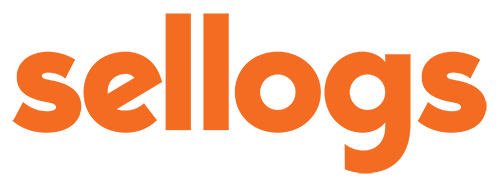Let me confess before I begin – I have the entrepreneurial “itch” which brings me back very often to beginnings of some business multiple times in life. When I left a comfortable position in a promising logistics tech startup 2 decades back, the founder gave me a piece of splendid advice – “If you want to be an entrepreneur, you should be ready for a lower quality of life”. Since then, in the past 2 decades, I have lived in the midst of Logistics Tech from the time we built the first netcentric ERP for Logistics Service Providers in 2002. Many Logistics Tech Startups have come, gone, and also stayed anchored with their business models which appealed to the user and made a positive change to his businesses. We will focus our discussion in this article to the Transactional, Decision Support, and Tech Leveraged Solutions in Logistics which made their appearance in business in the past decade.
“You can only do so many things great, and you should cast aside everything else.” ~ Tim Cook, CEO of Apple and made the Apple Supply Chain what it is today.
This is absolutely true when you analyze the trend in Logistics-Tech-Startups. 99% of these initiatives have focussed on their area of core competence, the background they came from, and the stream of specialization in logistics they focussed. We can segregate the startups whose founders are those who came from the Logistics (Sales, Consulting, Operations) Domain whom I would tag as DOERS and the Young breed of tech-savvy Ivy league Alumni who made their mark by building high valuation Entreprises – whom I would tag as DARERS.
DOERS: People who came from the Ocean Carrier industry, built Demand Aggregation for Carriers. People who came from the Freight Forwarder background (All Modes) built Freight Exchanges, which morphed into Freight Aggregators and which is again morphing into Freight Sourcing Platforms. Who came from Warehousing background built Productivity tools for warehouses and Warehouse demand aggregation. Truck aggregators, Uberisation of Small trucks, Reverse Auction platforms, Freight Audit Platforms – Mostly those are EXECUTION in nature and TRANSACTIONAL in form and which reduces the effort of the operator or provides reduction of cost and increase in efficiency when applied.
DARERS: In this segment of Founders, it is not the years of experience but the knowledge of technology and its application on some of the case studies in the Logistics Execution process which has helped them to create businesses around it. Mostly, they are either TRANSACTIONAL – TMS, FMS, WMS, or some elements of ERP interventions. Or They are more ANALYTICAL solutions catering to areas of Planning, Optimisation, Business Intelligence, Control Towers, IoT, Predictive Analytics, BlockChain ……. and the list can be really long. The solutions are aspirational – most of the solutions wanted to solve the problem of the world in Logistics and they took the best of tech and threw it on the Real-world problems of Logistics and came out with their version of solutions.
The world of Tech Solutions in Logistics has grown and excelled. The investor community is quick to jump on any opportunity in such solutions segments – because they believe that the future is Supply Chain. Brilliant minds have woven exceptional solutions to specific problems and have built several siloed fields (read minefields) of solutions for the SERVICE USER (The One who pays for the Freight and Services). It is very pertinent to see WHY the service user is not waiting at the gates on a Black Friday to buy these solutions off the shelf and implement them. Maybe an old quote about Logisticians sums up the reason for us:
My logisticians are a humorless lot … they know if my campaign fails, they are the first ones I will slay.
Alexander-The-Great
Well, this is true. Anyone who has served in that hot seat in an FMCG, Heavy Engineering, ECOM, Critical Care Pharma…etc will tell you that the above quote is not out of context. In my 3 decades of learning, talking, and teaching logistics, I would have spoken to a lot of Supply Chain Leaders from the Service User segment. All of them depend on their ERPs and MS Excels when they go to war every day to deliver their goals. They have proven techniques of how to use them and articulate them. They have won many Pay rises with these techniques. If you need them to change their technique, you need to get into their shoes and understand the fact that – You cannot be like the 5 blind men who touched an Elephant and described it as a tree trunk, tube, and a big tub. You need to open your eyes and see the Elephant as a whole.The Whole is Greater than the sum of the parts in Logistics Execution.
So to see WHAT BLOOMED – All Applications, Solutions, and technology which offered “OWNERSHIP” of getting the outcome and delivering it.
- Digital Forwarding – Grew multiples in a short span of 3 years. It forced all traditional forwarders to adapt and follow. Digital forwarding brings speed and predictability to the job of a forwarder. It may, at times help to control costs.
- Return Load Optimisation, Reverse Auction Platforms, and Uber Models in Trucking – The Oldest case study in digitalization in the Logistics business. Brings Cost down, Sweats the asset more, gives more CHOICE to be buyer, offers QUICK turnaround of truck placement and the list goes on. These platforms have grown multiple times.
- Transaction Visibility APIs – Grew multi-fold. The solutions which offered synchronized tracking of a moving asset (Remote Asset Tracking), Visibility tracking of Cargo with APIs along the way of transit, Predictive ETA services, On-demand Location services. Slowly, this availability of on-demand data is becoming an addictive service to the Service User.
- Managed Services for Planning and BI. Services like Demand Planning, Supply Planning, S&OP support services, Control Towers, Freight Audits, et. The adoption is still at the Top 5% of the customer base. As technology becomes cheaper the cost of such services will come down increasing adoption.
Well, we can also have a peep into WHAT BOMBED, not entirely bombed – maybe these are well before its time or need tweaking in its business model or maybe addressed the wrong segment of the market:
- Freight Exchange Platforms and Subscription-based Demand Aggregation Platform in various modes of transport ( more in Trucking) – Most of these businesses raised a lot of money and have revenues which are a fraction of the funds raised even after, in some cases, 8 years of operation. These platforms serve the Logistics Service Provider and are subscription-based and hence no focus on getting transactions done.
- High-End Deep Analytics Platforms – Very focussed and highly specialized offering. Often end up competing with established powerhouses like SAP and ORACLE on whose system runs the Operation. Maybe, they are Before-its-time concept or maybe they will have to do a serious rethink on tweaking the product for a larger base of Supply Chain Users.
- Technology Driven Startups with very little domain expertise in Logistics Operations: We have come across some excellent use of technology for solving some of the more challenging problems. We have seen that they either under-delivered on a solution expectation or they Over-shoot the solution expectation in the current context. It is time for them to re-visit the productization postulates and work on realistic solutions at an affordable cost.
WHAT WILL BEAR ON IN THE AFTER COVID ERA
- Solutions that see the Elephant as a Whole. Middlewares (I know – an old term for something which binds together some other things) which will aggregate information across the Supply Chain and present them in logical clusters for decision making.
- Mode Specific, Activity Specific Transaction Solutions with clear outcomes – Like Applications which – Provide Choice of Verified Vendors for an activity, Provide intelligent decision matrix like Vendor Rating and Freight allocation suggestion, Logistics Compliances adherence, Logistics Security and Safety compliance alerts, etc.
- Any application which increases the Velocity and Accuracy of Inventory.
- Predictive Analytics – Freight Index, Freight Futures, Supply/Demand Planning in Logistics Services, Cost-To-Serve Analytics…..
- Centre of Gravity of Solutions shift towards the intersection of PPC/SCM/Logistics/IT – The kind of solution which helps you to view your world at 50k feet level, but helps you drill down to the transaction if needed.
The brilliant minds and the innovative minds across the domain and tech worlds will continue to surprise us with solutions and products – as demand gets more and more real-time, manufacturing gets more distributed, product postponement becomes the go-to-market strategy and the end consumer buys more frequently in smaller quantities and finally movement across borders become tougher due to geopolitical issues.
Let us welcome more Unicorns (of Revenue), Leveraged Valuation (by Service Outcome) companies who bring techniques and solutions which are battle-ready to the Supply Chain domain.























